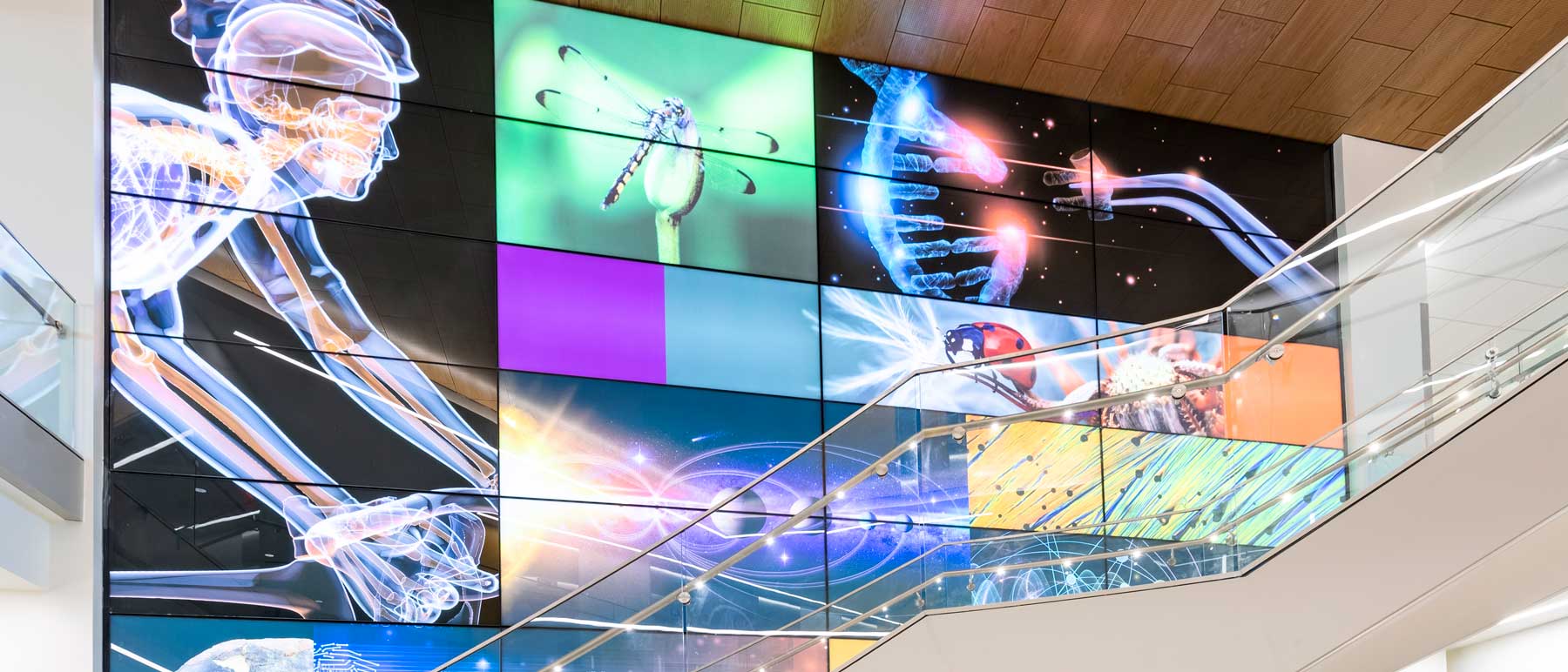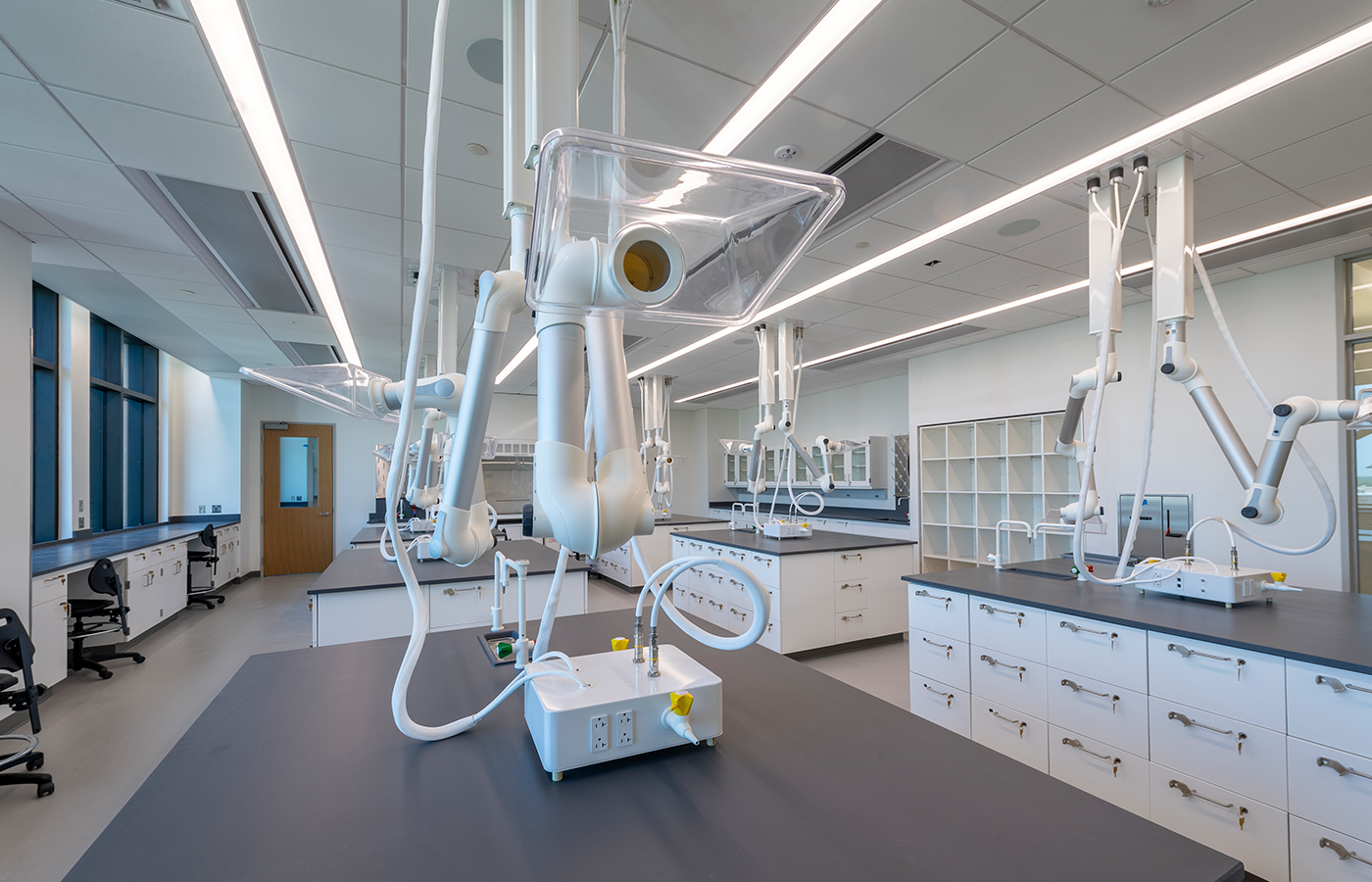October 2023 CIO Update
As the kitschy flag on my neighbor’s house says, Happy Fall Y’all! For this month’s entry, I would like to highlight some thoughts from VCU Chief Information Security Officer Dan Han as we transition into our more modern security architecture as well as provide some insight into Technology Services’ role in the launch of the new and exciting STEM building. I would also like to put in a plug for the Tech Fair, coming to the Student Commons on Tuesday, October 24 from 10:30-1:30 and to the Larrick Center on Wednesday, October 25 from 10:30-1:30.
A Reflection on Building a Post-Pandemic Security Architecture
The global pandemic fundamentally shifted how business organizations operate, from instant video meetings and the prevalent use of team chat technologies to hybrid and remote work arrangements. Combined with the gradual shift to cloud computing services, the already deteriorating “Castle and Moat” cybersecurity architecture of the past experienced a rapid collapse throughout the pandemic as employees left the trusted zones within our organizational castles and journeyed into the apocalyptic wasteland that is the open Internet.
During the pandemic, VCU adapted quickly to accommodate remote and hybrid work and learning environments; whether it was through the rapid expansion of VPN and video conferencing availability or through the provisioning of loaner computing and Internet access devices, the swift actions taken by the university allowed all of us to realize an unprecedented level of agility, productivity, and flexibility.

Along with being able to offer flexible work arrangements, we also had to examine the efficacy and effectiveness of the security architecture needed to support this new environment. In order to truly enable a secure borderless organization that could support the aspirations of “work anywhere, anytime, and from any device,” we had to rethink our cybersecurity strategy and move away from the traditional castle and moat approach.
VCU therefore embarked on a journey to modernize its cybersecurity architecture during the pandemic. When it comes to cybersecurity controls and protections, consistency is better than variance, and invisible is better than visible. With the help of a new set of security tools provided through a Secure Access Service Edge (SASE) platform called ZScaler, this new architecture takes these core principles and the ideas behind the zero-trust framework into consideration. This architecture extends consistent protection to devices and workloads regardless of location. In addition to providing individualized and location-agnostic protection, the architecture also aspires to provide a consistent experience to employees through an “always-on VPN,” which would provide individuals with transparent access to what they are entitled to access regardless of where they are. In other words, an employee can work from a coffee shop, her home, or the office, the experience and access she has from her VCU-issued computer would remain the same, and all she needs to do is to power on the computer, connect to the Internet, and log in, just as if she is in the office.

Although the deployment of this technology and this portion of the architecture is completed, we are still refining the cybersecurity architecture for the university. Building on top of what the SASE platform enabled, we will further examine the authentication and access requirements for the high-sensitivity assets of the university, where additional signals from devices and identities can be used to make real-time decisions on access provisioning for these assets. In the next six to nine months, we will examine access models for high-sensitivity assets and the role of traditional security tools such as the VPN. Our goal is to build a high-quality, consistent, and resilient security architecture that can help to support our hybrid workforce and protect our workforce and our information regardless of where they are.
VCU STEM, The “T” Stands for Technology
We all know that STEM stands for science, technology, engineering, and math. For the new College of Humanities and Science STEM Building, technology also stands for the support that VCU Technology Services provided for constructing the building and the continuing operations of the STEM building and programs that live within. The 169,000-square-foot, six-floor building expanded teaching lab space while encouraging the exploration of new teaching methods. This has been an exciting project for VCU TS.

Many VCU TS teams supported the opening of the building, including Media Support Services and Labs and Classrooms, who participated in the design and installation of the classroom technology utilized for the academic programs in the building. On the infrastructure side, Network Services contributed to the design and installation of the wired and wireless networks and worked with the Desktop Services team and VCU Police on Meraki camera deployment for the exterior of the building. Telecommunications Services provided installation and deployment of telephone services for faculty and staff working in the building. Working to keep the building and VCU community members located in the building safe, Campus Card Services provided access door and key storage technology, and Desktop Services provided emergency notification alerting services and digital signage technologies.

Once the building opened, VCU Technology Services support did not stop there. Academic Technologies manages many of the applications and tools needed to support an innovative sciences curriculum. These resources promote learning in areas of anthropology, biology, chemistry, forensic science, kinesiology and health sciences, mathematics and applied mathematics, physics, and psychology and include: Alpha Pro, MATLAB, SPSS, JMP, and Mathematica. Many of these applications and tools are available to students, faculty, and staff at no cost. To learn more about what is available and how to access these applications, please visit the TS Software Center.
In addition to the applications and tools, Academic Technologies, in partnership with DigitalEd, has launched a university-wide Möbius pilot this fall, which runs through June 2024. Möbius is a cloud-based learning platform for creating and deploying STEM course materials for all modalities. Providing lessons, assessments, and interactive learning activities, it unfolds the potential for the STEM student to acquire knowledge at a guided, yet self-defined pace. To learn more about Möbius and the pilot, visit go.vcu.edu/mobius.
VCU Tech Fair 2023
Please join us at the VCU Tech Fair this week! Whether you attend Tuesday (10:30-1:30 in the Richmond Salons of the Student Commons) or Wednesday (10:30-1:30 in the Court End Ballroom of the Larrick Center), you will be able to interact with TS staff and vendors and learn about exciting new technologies. Thanks to all who participate, and thanks to everyone for making all of what Technology Services does possible!
Alex